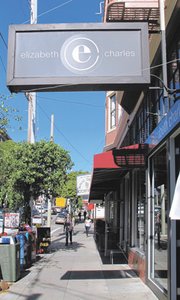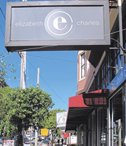San Francisco's Fillmore Uneasy About New Stores
San Francisco’s retail neighborhoods have a reputation for keeping the big brands out.
But a handful of prominent brand and designer boutiques opened in San Francisco’s Fillmore neighborhood recently, and independent boutique owners and their staffs in the upscale neighborhood fear their days are numbered.
“In 15 years, this street will be a mall,” said Eddie Izzo, buyer for the Metro 200 boutique, located at 2116 Fillmore St. “Small stores won’t be able to make it here with the high rents.”
By Christmas, Gap Inc. will open a boutique for its Athleta label at 2226 Fillmore St., the site of a former Junior League thrift shop. Upscale basics label James Perse debuted a boutique at 2028 Fillmore St. in October. Designer label Alexis Bittar also was scheduled to open a boutique, at 1942 Fillmore St., the same month.
In March, Brooks Brothers’ fashion-forward Black Fleece label opened a boutique at 2223 Fillmore St. The street started changing in 2008 when New York designer Marc Jacobs opened a Marc by Marc Jacobs boutique at 2142 Fillmore St. The same year, a Ralph Lauren boutique opened at 2040 Fillmore St.
Many people would be thrilled to have these internationally known retailers set up shop on their streets. However, the new neighbors have made some Fillmore residents uneasy. Because of the city’s Proposition G law, brand-name or “formula” retailers face several hurdles before they can open in any San Francisco neighborhood other than trendy Union Square and touristy Fisherman’s Wharf.
Brand retailers with more than 11 stores must go through a lengthy conditional-use-permit process. Last year, American Apparel’s application to open a store in San Francisco’s Mission District was rejected after a series of hearings.
Brooks Brothers had to go through a seven-month hearing process before the company was allowed to open its idiosyncratic boutique, which is only one of two Black Fleece stores in America.
According to community newspaper The New Fillmore, Gap Inc. exploited loopholes in the law to secure space for the Athleta store—although Gap officials quoted by the community newspaper rejected the accusation.
The formula retail rule puts neighborhoods in a unique situation, said Thomas Reynolds, president of the Fillmore Merchants Association. “The real issue is how to protect a neighborhood like this without limiting the vitality of business and the possibilities of change,” he said.
One big change on the street has been a decrease in vacancy, said Kazuko Morgan, executive vice president of Cushman & Wakefield of California. However, a square foot of commercial space on the block ranges from $6 to $7 per month, Morgan said. “This is a strong neighborhood street, but it’s not [Los Angeles’] Robertson Boulevard,” she said.
Fillmore can be a boutique owner’s dream, said Elizabeth Charles, owner of the Elizabeth Charles boutique at 2056 Fillmore St. It’s a neighborhood buzzing with pedestrians walking past its beautiful buildings and upscale restaurants. It’s located adjacent to the wealthy Pacific Heights neighborhood. “A lot of people from Pacific Heights want to support local business,” Charles said. More than 70 percent of sales at her designer shop come from the neighborhood’s well-to-do loyal shoppers.
The Australian-born Charles debuted a New York store in 2002 and opened her Fillmore Street store in 2007. Her stores’ initial focus was on Australian and New Zealander designers back when the U.S. dollar was stronger than the Australian dollar. Recently, however, the Australian dollar gained parity with the American dollar, and Charles has been selling more European designers and Australian designers headquartered in Europe.
Top-selling items at Elizabeth Charles include Isabel Marant’s multi-color dress made with a Lurex-like material. It retails for $439. Other popular items selling are the “Plaza” dress by Preen, which retails for $989, and Rue du Mail’s jacket with a draped skirt, which retails for $1,500.
Top-selling items at Metro 200 are tunics from French brands Cop Copine and 2026. They retail for $250 and $215, respectively. Also popular is a matching coat and legging outfit from 2026. The rayon/wool coat retails for $229. The leggings retail for $85.
Boutique owner Mio Ota has been running her Mio boutique on Fillmore for more than 30 years. She said her customers from the neighborhood and around the Bay Area are always on the search for unique items. “The price does not matter,” she said. “If it is special enough, it says, ’Buy me.’”
Her core consumers are aged 40 and up, and they have been buying a jacket from Montreal-based Marie Saint Pierre, which retails for $990; a black dress from Anett Rouml;stel, which sells for $1,295; and a kimono coat from Akihiko Izukura, which retails for $1,395.

























